Abstract
Recent investigations have revealed that monkeypox virus infections occur with a high prevalence in several species of squirrels belonging to the genus Funisciurus, less frequently in squirrels of the genus Heliosciurus, and rarely in forest-dwelling primates. These squirrels commonly inhabit the secondary forests around human settlements in the rural areas of Zaire, especially where oil palms are grown, and are rare in the primary rain forest.
Human infection with monkeypox virus occurs most frequently in the 5-9-year-old age group, particularly in small villages where the children hunt and eat squirrels and other small mammals. As the populations are now increasing in number and can no longer feed on wild life alone for their animal protein requirements, the development of animal husbandry as a source of meat will certainly decrease the risk and the incidence of human monkeypox, even in areas where monkeypox virus is present in the local population of squirrels.
Although population growth and economic development in western and central Africa will probably reduce the risk of human infection with monkeypox virus, visitors to these areas who are likely to come into contact with wild animals should be offered smallpox vaccination as a protection.
Full text
PDF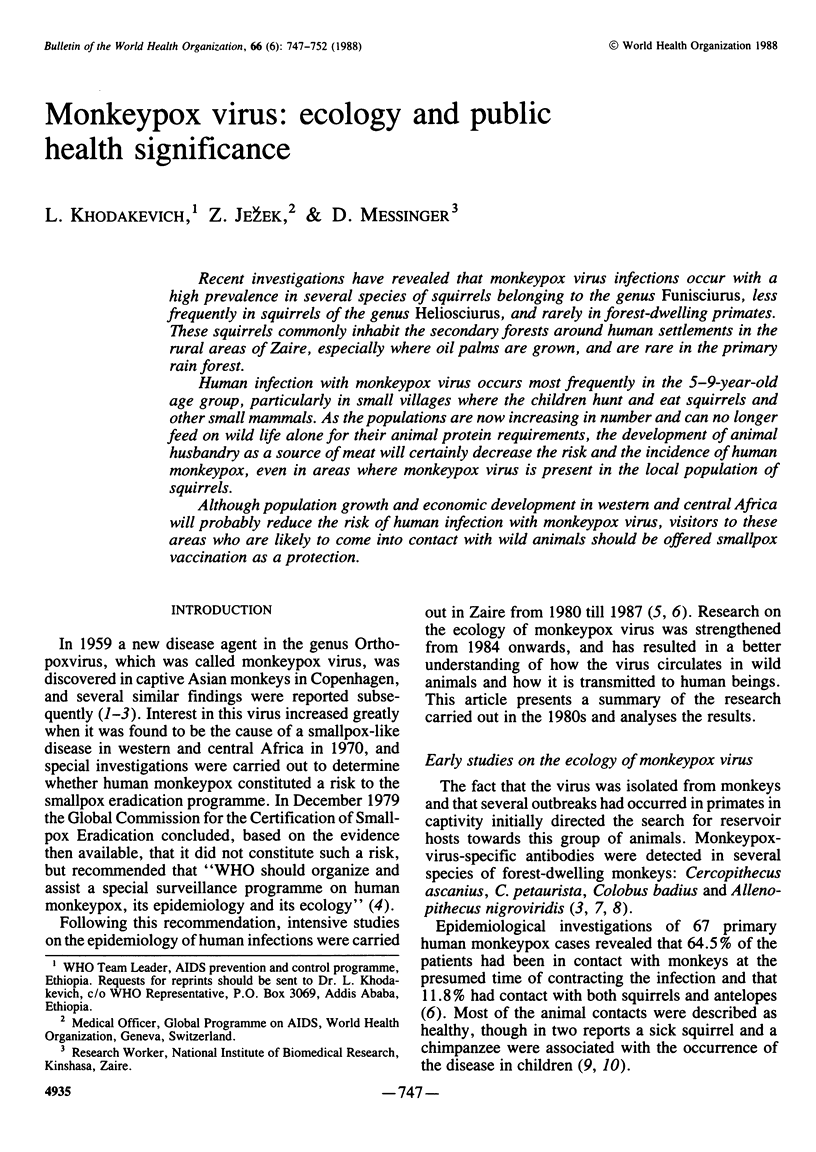
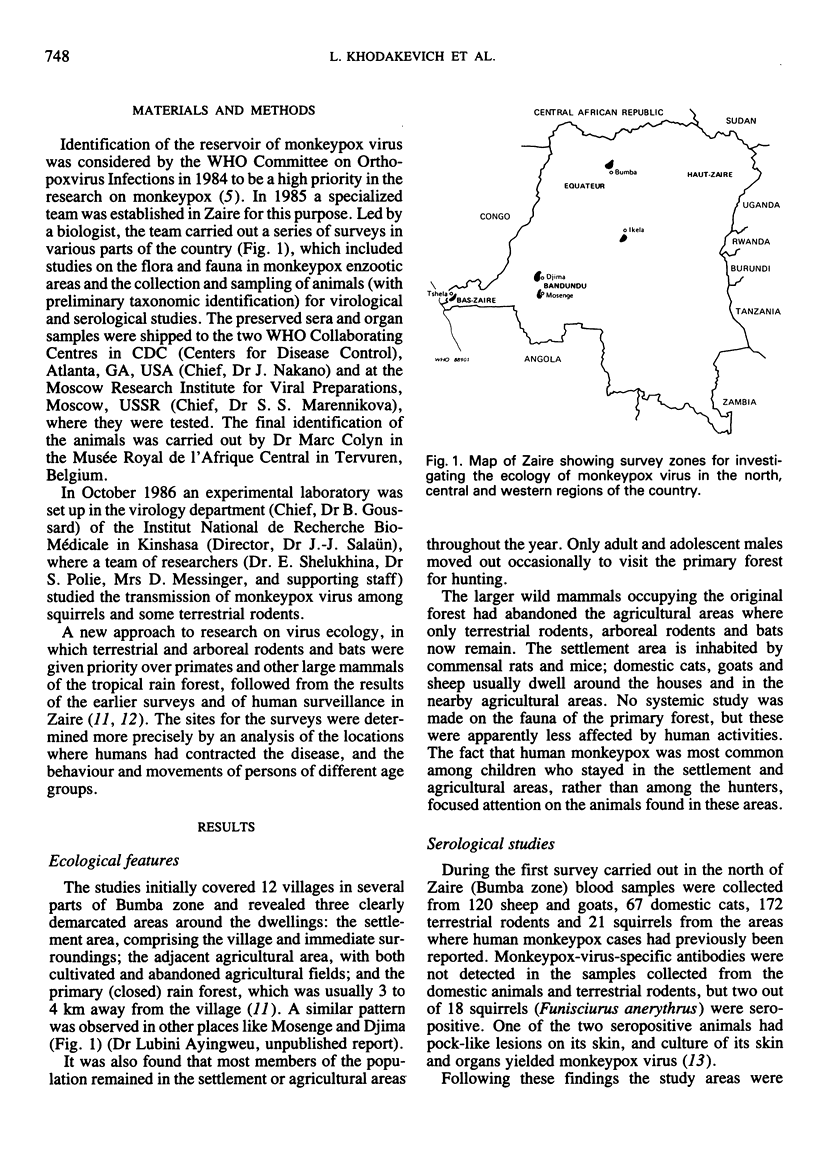
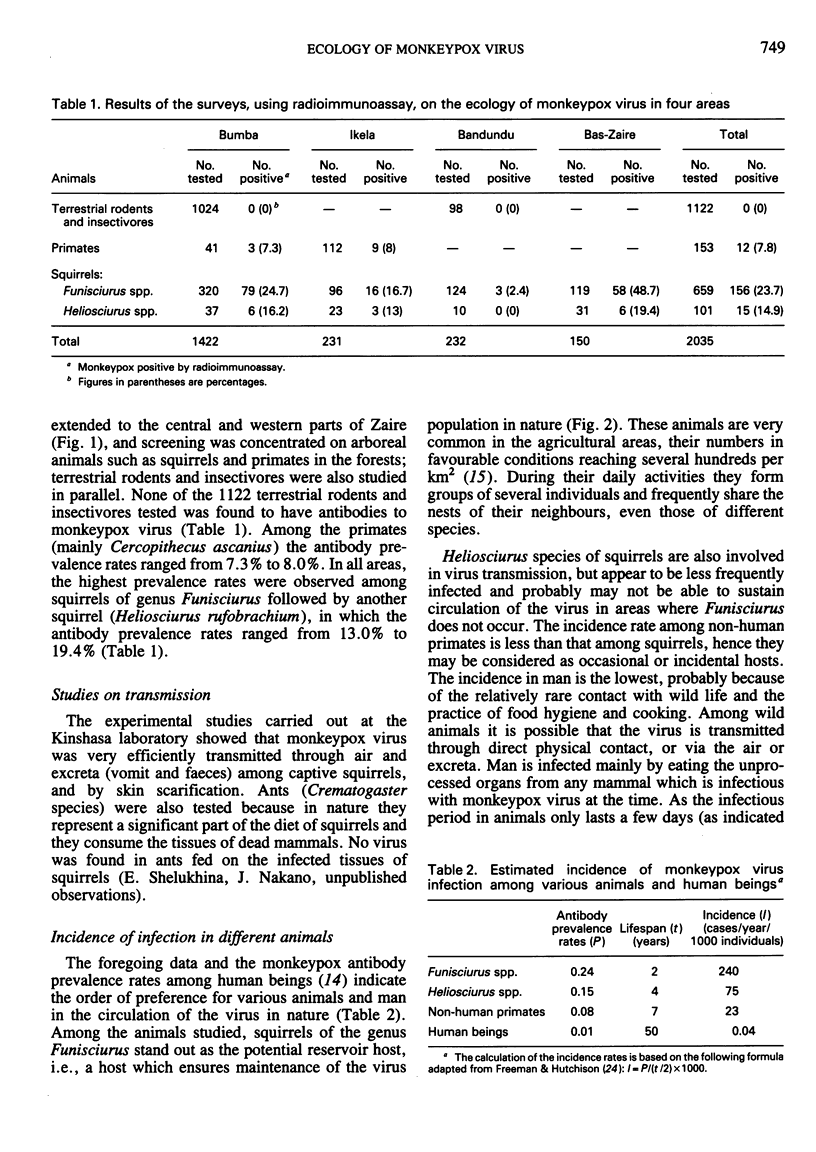
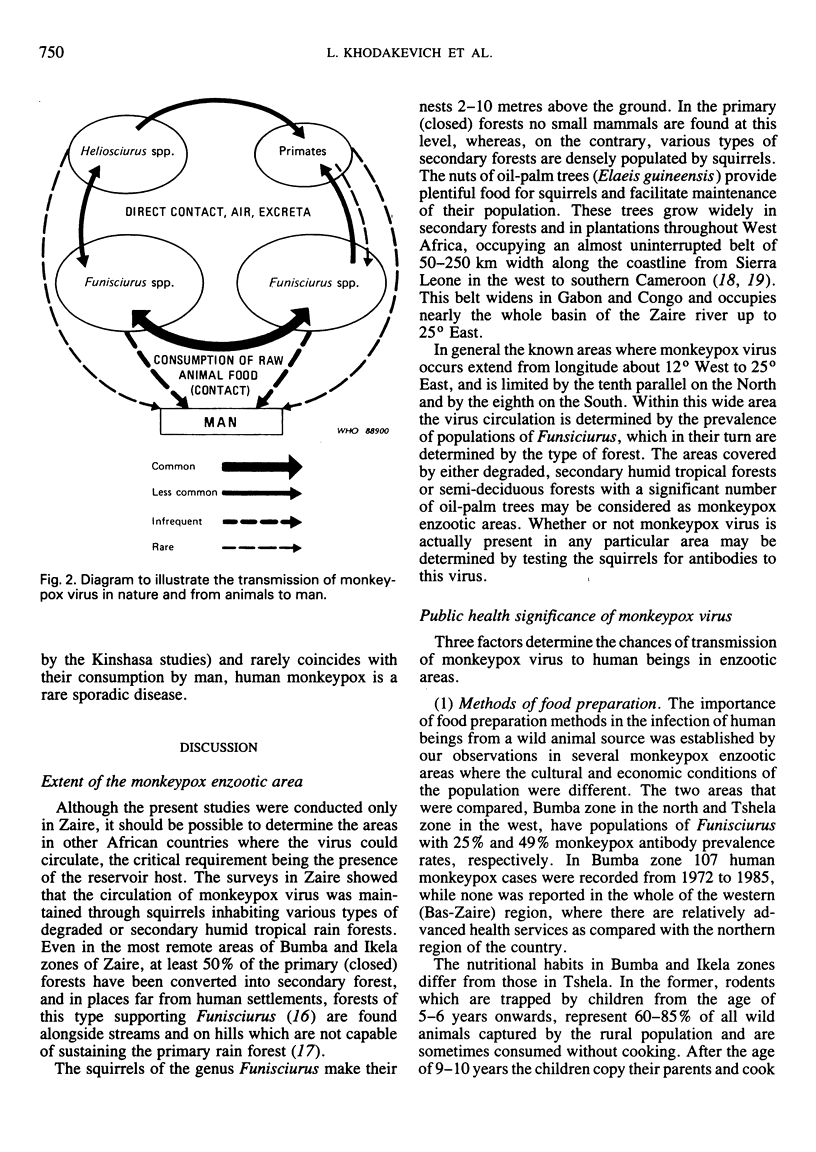
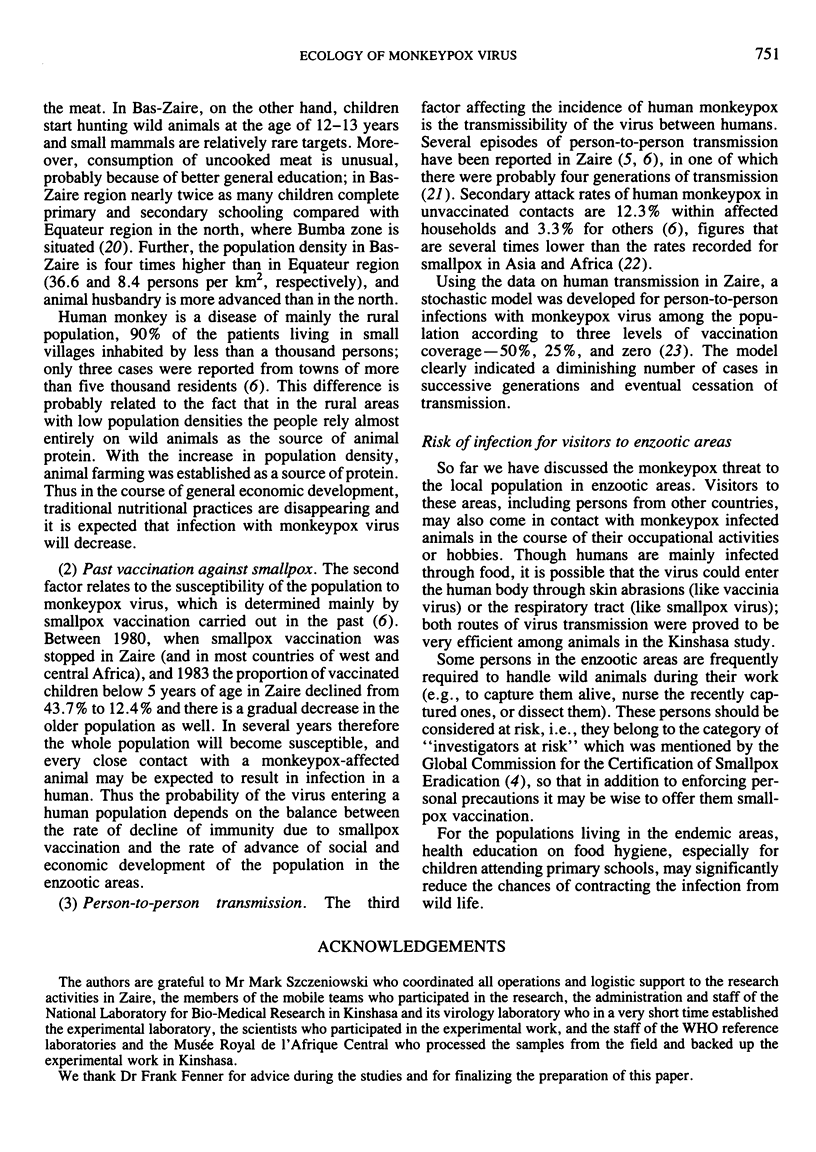
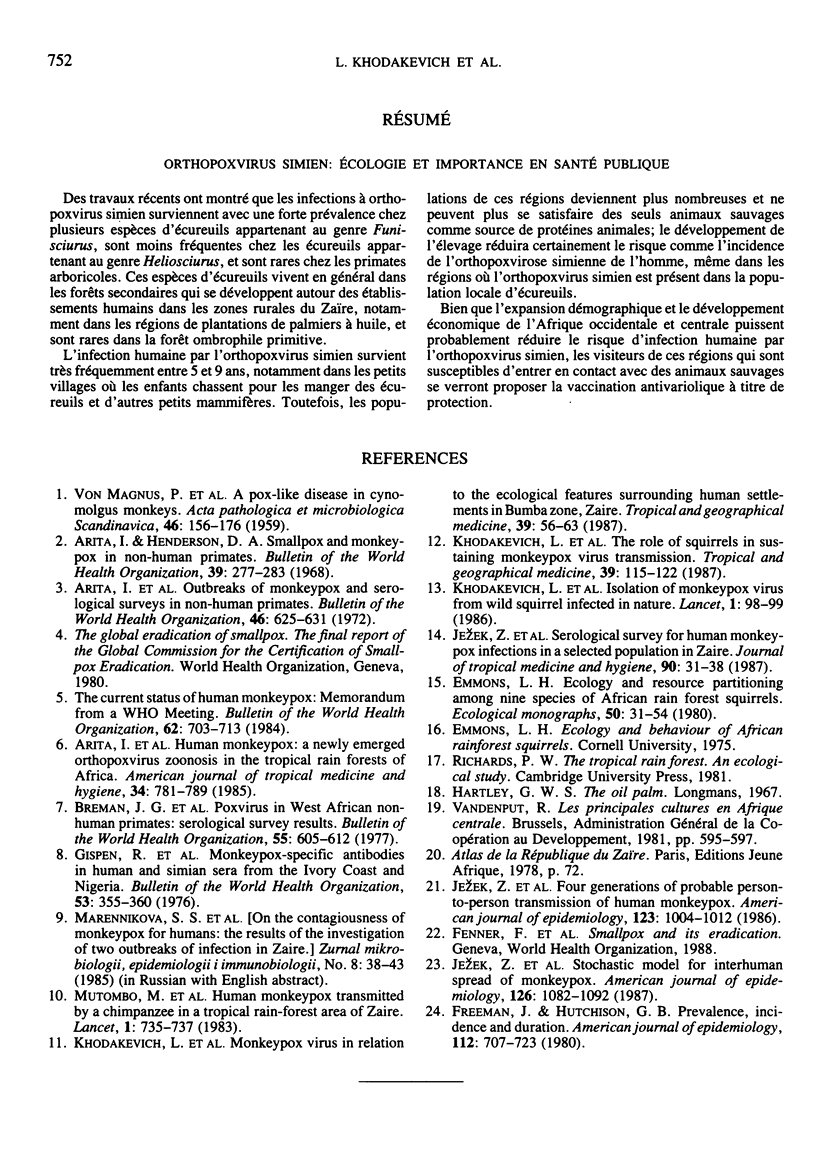
Selected References
These references are in PubMed. This may not be the complete list of references from this article.
- Arita I., Henderson D. A. Smallpox and monkeypox in non-human primates. Bull World Health Organ. 1968;39(2):277–283. [PMC free article] [PubMed] [Google Scholar]
- Arita I., Jezek Z., Khodakevich L., Ruti K. Human monkeypox: a newly emerged orthopoxvirus zoonosis in the tropical rain forests of Africa. Am J Trop Med Hyg. 1985 Jul;34(4):781–789. doi: 10.4269/ajtmh.1985.34.781. [DOI] [PubMed] [Google Scholar]
- Breman J. G., Bernadou J., Nakano J. H. Poxvirus in West African nonhuman primates: serological survey results. Bull World Health Organ. 1977;55(5):605–612. [PMC free article] [PubMed] [Google Scholar]
- Gispen R., Brand-Saathof B. B., Hekker A. C. Monkeypox-specific antibodies in human and simian sera from the Ivory Coast and Nigeria. Bull World Health Organ. 1976;53(4):355–360. [PMC free article] [PubMed] [Google Scholar]
- Khodakevich L., Jezek Z., Kinzanzka K. Isolation of monkeypox virus from wild squirrel infected in nature. Lancet. 1986 Jan 11;1(8472):98–99. doi: 10.1016/S0140-6736(86)90748-8. [DOI] [PMC free article] [PubMed] [Google Scholar]
- Khodakevich L., Szczeniowski M., Manbu-ma-Disu, Jezek Z., Marennikova S., Nakano J., Messinger D. The role of squirrels in sustaining monkeypox virus transmission. Trop Geogr Med. 1987 Apr;39(2):115–122. [PubMed] [Google Scholar]
- Khodakevich L., Szczeniowski M., Nambu-ma-Disu, Jezek Z., Marennikova S., Nakano J., Meier F. Monkeypox virus in relation to the ecological features surrounding human settlements in Bumba zone, Zaire. Trop Geogr Med. 1987 Jan;39(1):56–63. [PubMed] [Google Scholar]
- Mutombo M., Arita I., Jezek Z. Human monkeypox transmitted by a chimpanzee in a tropical rain-forest area of Zaire. Lancet. 1983 Apr 2;1(8327):735–737. doi: 10.1016/S0140-6736(83)92027-5. [DOI] [PMC free article] [PubMed] [Google Scholar]


